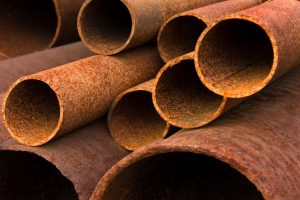 Reza Javaherdashti, PhD
Reza Javaherdashti, PhD
Materials Science and Metallurgical Engineering
Chief Executive Officer, MICORR
Date: June 15, 2022
Time: 1000h ET
Sponsor: Hiden Analytical
In this webinar, Dr. Reza Javaherdashti discusses the relationship between the efficient management of corrosion protection and clean energy strategies. After a quick introduction to the basics of corrosion and cataloguing corrosion countermeasures, Dr. Javaherdashti outlines the dilemma of corrosion management strategies, as well as the challenges of clean energy susceptibility requirements (as related to environmental friendliness).
A significant focus of research and application related to clean energies is to reduce the negative effects of fossil fuels which are contaminating our planet (via their by-products) and rapidly consuming our natural resources. Any factor that can assist “clean energy-based strategies” has to be seriously considered. One of the most interesting of these factors is corrosion management.
Embodied energy (EmE) is defined as the energy consumed by all the processes associated with the production of a structure from the acquisition of natural resources to product delivery. The importance of EmE is its relationship with the release of one of the most important greenhouse gases, i.e., carbon dioxide. Every gigajoule (Gj) of energy produced results in the release of approximately 0.098 tonnes of carbon dioxide in the atmosphere; this relationship makes EmE a useful measure to assess the environmental impact of materials and processes.
When a metallic part is made, it accumulates energies from the energy consumed in mining it, to the energy that is consumed to fabricate and shape it. Various shapes of metallic components and different ways by which they have been fabricated are all subject to corrosion. When a metal corrodes, it is doing a natural process due to its thermodynamic background, and also produces a lower EmE figure.
A lower EmE, in terms of being environmentally friendly, is certainly a positive point. However, if corrosion is so environmentally friendly, should we not let metals corrode? Should we not try to prevent any measures that would make an obstacle towards having a smaller EmE through corrosion?
Benefits of attending the webinar
- Understand corrosion and the need for corrosion management within a completely new context;
- Recognize the so far overlooked link between corrosion management and environment protection;
- Study the link between greenhouse gases’ release and corrosion.
Dr. Reza Javaherdashti
Dr. Reza Javaherdashti, CEO at MICCOR, holds a double degree in Materials Science and Metallurgical Engineering. He has more than 20 years of industrial and academic experience. An approved instructor of the American Society of Mechanical Engineers (ASME) and Society of Petroleum Engineers (SPE), Dr. Reza spent more than 5,000 hours training industries around the globe on corrosion and microbial corrosion topics. He also devised systems of corrosion knowledge management, which he taught globally across industries. Dr. Javaherdashti has several published papers in internationally recognized journals. Publishers including Elsevier, Springer, CRC Press/Taylor & Francis, and Wiley published his books. Visit his LinkedIn profile.
Learn more about upcoming ECS Webinars and review our previous webinar recordings.
We thank our webinar sponsors who make these complimentary programs possible.
Interested in presenting in the ECS Webinar Series?
Email your presentation title and abstract to education@electrochem.org for consideration.



